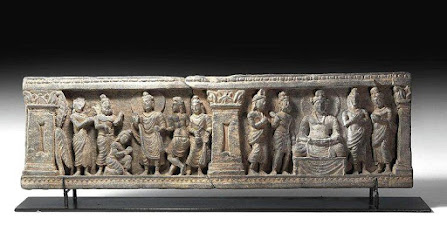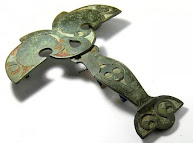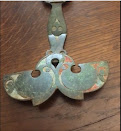As the number of Covid-related cases in the UK reaches four times as many as when Britain belatedly decided to begin a national lockdown, it's ending. The country's metal detectorists can't wait to get out there looting artefacts from the archaeological record again after the brief respite the lockdown created.
It may be noted that while Britain's artefact hoikers claim univocally "we are not in it fer the munny", current NCMD (Naysayers Council of Metal Detectorists) advice applies only to commercial activities, the individuals seem to have been left to sort it out fr themselves. Obviously with each commercial rally participant needing NCMD membership (for the insurance), it's in the NCMD's financial interest to pack as many in as possible this year. So this has come out today:
we are confident the following advice is correct:
STEP 1 (from the 29 March) – No events are allowed.
STEP 2 (no earlier than the 12 April) – It’s not cut and dried. Most outdoor events are NOT allowed. We have been told that only very specific events are permitted, these are mainly drive in events (think drive in cinemas). However it is your Local Authority who will decide what events can proceed and they are being given more guidance over the next few days. Advice MUST be sought from the Local Authority in which the land belongs and we believe approval to hold an event is very unlikely to be given.
STEP 3 (no earlier than 17 May) – Outdoor events for up to 4000 people are allowed. They can only be organised by registered businesses and charities, etc. (following covid secure protocol).
UPDATE 30th March 2021
next day, the NCMD updated its advice:Latest advice for England as we exit lockdown 30th March 2021
England is still in national lockdown but restrictions are starting to be lifted. Below are some very basic guidance for our hobby on what can and cannot be done at each of the 4 steps out of the coronavirus restrictions. This is an update on the advice we gave on the 2nd March to reflect the changes in event guidance.
Guidance for the other nations are provided separately.
Please note that all dates from Step 2 onwards may be changed. These are the earliest dates when this step in reducing restrictions will be introduced.
STEP 1
From 29 March, the rule of six for outdoor gatherings will return and will include informal outdoor sport and recreation. The ‘stay at home’ rule is lifted. However you should continue to minimise travel wherever possible, and you should not be staying away from home overnight at this stage. No events are allowed.
STEP 2
Step 2 will begin no earlier than 12 April. Social contact rules in England will not change further at this point. Outdoor gatherings must still be limited to 6 people (the rule of 6) or two households, as in Step 1. Travel should still be minimised. Staying away from home is only permitted in a domestic setting (single household) or self catering facility where no facilities (including catering) are shared with other households.
Please see separate advice on events.
STEP 3
Step 3 will start no earlier than the 17 May. The Government will lift most legal restrictions on meeting others outdoors, but gatherings of more than 30 people outdoors will remain illegal.
From this stage outdoor events will be able to take place (please see separate guidance)
STEP 4
Step 4 will take place no earlier than 21 June and will remove all legal limits on social contact.
Government guidance on the roadmap out of lockdown can be found here https://www.gov.uk/government/publications/covid-19-response-spring-2021/covid-19-response-spring-2021-summary#step-2—not-before-12-april






























